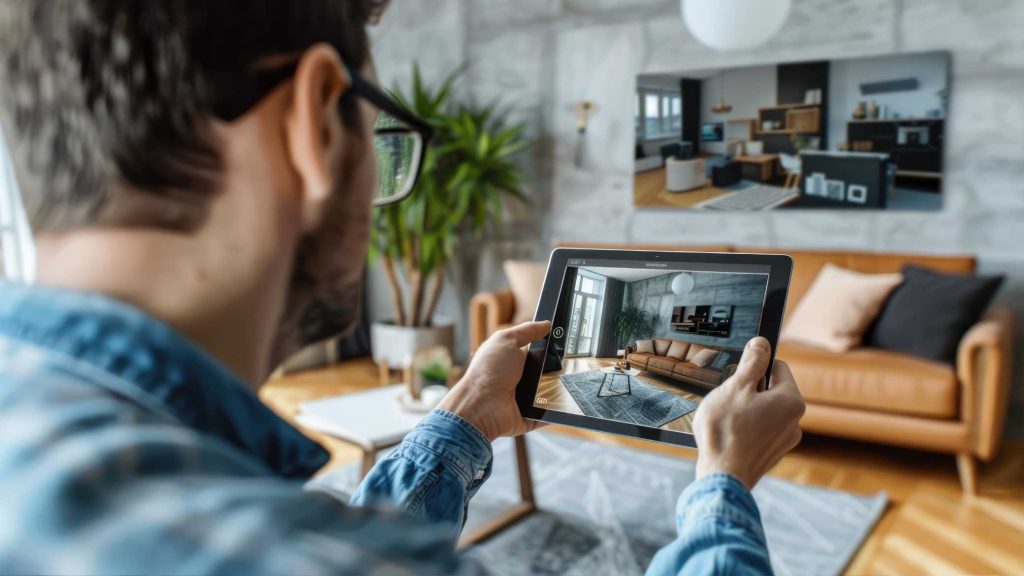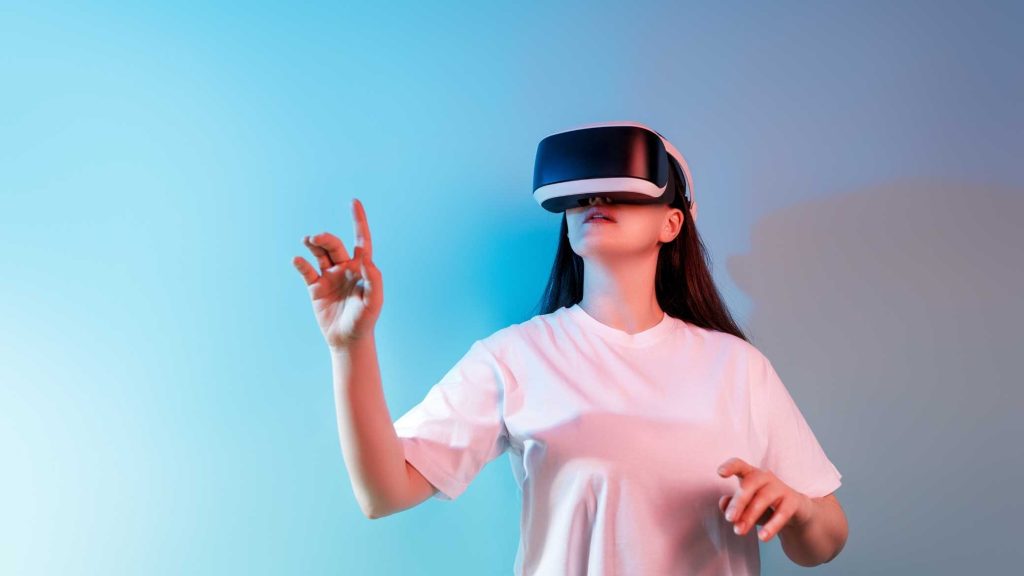AR and VR in Digital Marketing 2025 : A Comprehensive Guide
AR and VR in Digital Marketing: In 2025, digital marketing continues to evolve at a breakneck pace, and two of the most transformative technologies leading this revolution are Augmented Reality (AR) and Virtual Reality (VR). These technologies are not just reshaping how brands engage with their audiences but are also creating immersive and personalized experiences that were once deemed science fiction. With consumers demanding more interactivity and personalization, AR and VR are no longer optional but essential tools for forward-thinking marketers.
Table of Contents
Understanding AR and VR
Augmented Reality (AR) overlays digital content onto the real world, enhancing the physical environment with interactive elements such as images, animations, or information. AR is widely accessible through smartphones, tablets, and AR glasses, making it a practical tool for marketers to engage with users in their day-to-day environments.

Virtual Reality (VR), on the other hand, creates entirely immersive digital experiences, transporting users to simulated environments that can be designed to meet specific goals. VR often requires specialized hardware, such as VR headsets, but offers unparalleled opportunities for creating fully engaging and memorable brand experiences.

The Role of AR and VR in Digital Marketing
Enhanced Customer Engagement
AR and VR provide immersive experiences that captivate customers far more effectively than traditional marketing channels. Whether it’s an AR filter on social media or a fully immersive VR store, these technologies enable brands to engage users on a deeper emotional level. For instance, furniture companies like IKEA allow customers to visualize how products will look in their homes using AR apps, reducing purchase hesitation and boosting sales.
Personalized Marketing
Personalization has become the cornerstone of modern marketing, and AR and VR take it to new heights. AR can provide location-based personalized advertisements, while VR can simulate tailored brand experiences. For example, a luxury travel company can use VR to provide prospective customers with a virtual tour of their dream vacation destination, creating a highly personalized and persuasive pitch.
Improved Product Demonstrations
One of the most powerful applications of AR and VR is in product demonstrations. AR allows customers to try out makeup products, glasses, or even clothing virtually. Sephora’s Virtual Artist app is a prime example, enabling users to experiment with different looks before making a purchase. Similarly, automotive companies like Audi use VR to offer virtual test drives, letting customers experience vehicles without stepping into a showroom.
Interactive Advertising
AR and VR have revolutionized advertising by transforming static ads into interactive experiences. Brands now create AR-based games or VR experiences that make advertising entertaining and engaging. Snapchat and Insta filters, for instance, have become a playground for brands to showcase their creativity while subtly promoting products.
Data-Driven Insights
AR and VR experiences generate valuable data about user behavior, preferences, and interactions. By analyzing this data, marketers can fine-tune their campaigns, improve targeting, and deliver more impactful messages. For example, tracking how users interact with a VR product demo can reveal which features resonate most, guiding future product development and marketing strategies.
Read more: 10 Best AI Digital Marketing Tools 2025 : Comprehensive Guide
Case Studies of AR and VR in Marketing

- Nike’s AR-Driven Shopping Experience: Nike has integrated AR into its mobile app, allowing customers to measure their shoe size using their phone camera. This innovation has not only enhanced the shopping experience but also reduced return rates, as customers can now find the perfect fit more easily.
- Coca-Cola’s VR Holiday Campaign: Coca-Cola created a heartwarming VR experience where users could ride on Santa’s sleigh and explore a magical winter wonderland. The campaign generated massive social media buzz and reinforced the brand’s emotional connection with consumers.
- L’Oréal’s AR Beauty App: L’Oréal’s AR app allows users to try on makeup virtually, simplifying the decision-making process. This app has significantly increased user engagement and conversion rates for the brand.
Challenges of AR and VR in Marketing
Despite their immense potential, AR and VR are not without challenges. The cost of developing high-quality AR and VR content can be prohibitive for smaller businesses. Additionally, the need for specialized hardware like VR headsets can limit accessibility for some audiences. Technical challenges, such as ensuring seamless integration across platforms and devices, also pose hurdles. Finally, privacy concerns related to data collection and user tracking in AR and VR experiences must be addressed to maintain consumer trust.
The Future of AR and VR in Digital Marketing
As technology advances, the integration of AR and VR in digital marketing will only deepen. The development of lightweight AR glasses, 5G connectivity, and AI-driven personalization will further enhance the capabilities of these technologies. By 2025, we can expect to see:
- AR-Powered Search Engines: Visual search capabilities using AR will enable users to scan real-world objects and receive instant search results, bridging the gap between physical and digital marketing.
- Immersive E-Commerce: Virtual shopping malls and AR-based product showcases will become commonplace, offering customers a hybrid of online and in-store shopping experiences.
- Enhanced Social Media Experiences: Platforms like Insta will continue to integrate AR features, enabling brands to create more engaging and shareable content.
- Virtual Events and Brand Experiences: With the rise of the metaverse, VR-powered virtual events, product launches, and brand activations will become integral to marketing strategies.
Buy now: Premium Digital Marketing E-Books
Conclusion
Augmented Reality and Virtual Reality are redefining the boundaries of digital marketing, offering unparalleled opportunities for creativity, engagement, and personalization. As these technologies become more accessible and sophisticated, they will play an increasingly central role in shaping how brands connect with their audiences. By embracing AR and VR, marketers can stay ahead of the curve, delivering experiences that resonate with the tech-savvy consumers of 2025 and beyond.



